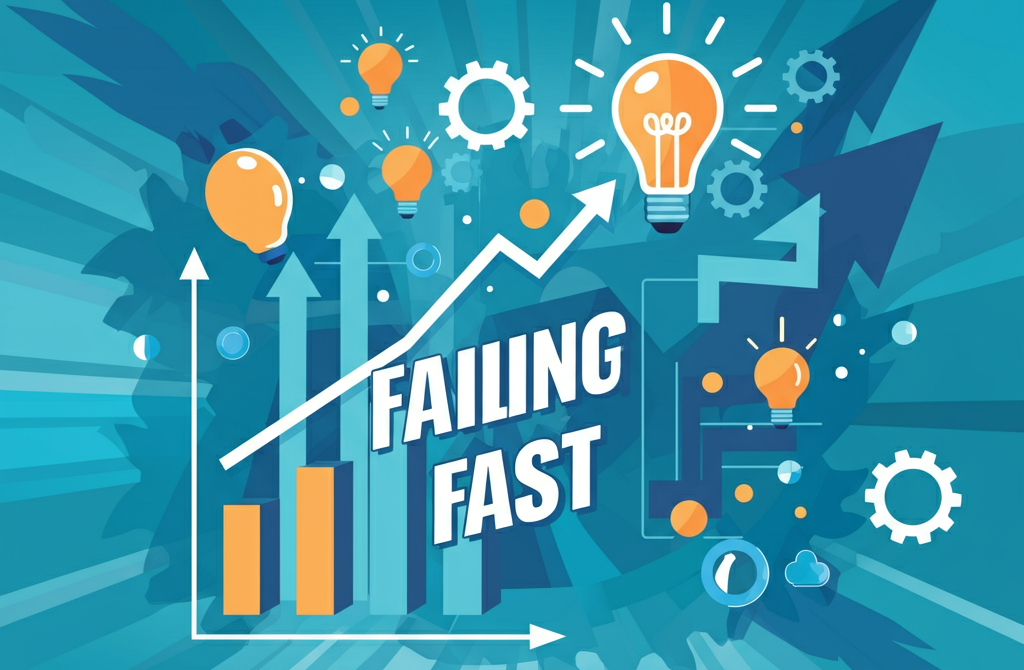My recent article on the concept of “failing fast” garnered significant interest, highlighting its relevance in today’s dynamic work environment. At its core, the power of failing fast is about testing ideas and technology in small, manageable steps. By doing so, organizations can quickly determine what works and what doesn’t, enabling swift course correction when necessary. This approach minimizes risk, enhances agility, and accelerates innovation.
However, failing fast is not a license to fail without limits. Instead, it’s about fostering a controlled, structured process that ensures failure is a steppingstone to success, not a recurring issue. To make this mindset effective, leaders must embed it into their organizational culture through clear guidance, thorough training, and supportive leadership. When implemented thoughtfully, failing fast becomes a catalyst for learning and continuous improvement, paving the way for innovation rather than repeated setbacks.
Implementing a Fail Fast Mindset
The failing fast mindset has gained considerable traction, especially in the tech industry, but how can organizations effectively adopt it while reaping its benefits? Here are key principles and strategies to create a fail-fast environment:
1. Foster a Safe Space for Failure
To encourage experimentation and risk-taking, organizations must create a culture where employees feel safe to fail without fear of reprimand. Failure should be seen as a learning opportunity, not a reason for punishment. This not only boosts creativity but also ensures teams are focused on progress rather than fear of mistakes.
2. Build a Process for Managing Failures
A structured approach to handling failures is essential. This includes identifying root causes, analyzing the impact, and taking action to prevent similar issues in the future. Leaders should embody accountability by owning failures rather than placing blame, creating an environment that prioritizes solutions over finger-pointing.
3. Promote Continuous Improvement
A fail-fast culture thrives on constant learning and evolution. Encourage teams to regularly review their work, identify areas for improvement, and refine their processes. Leaders can support this by offering resources like training, mentorship, and access to cutting-edge tools or technology.
The Benefits of a Fail-Fast Approach
To successfully implement a fail-fast approach, it’s essential to eliminate the negative perceptions surrounding failure. The stigma associated with failing must be reframed as a learning opportunity. Once this mindset shift occurs, the true advantages of the fail-fast method become evident. The power of failing fast and its benefits include:
- Fosters Innovation and Creativity: Embracing a fail fast mindset encourages employees to take risks and explore new ideas, knowing that failure is not only accepted but expected. This culture of experimentation drives innovation and creativity, empowering teams to step out of their comfort zones and break new ground.
- Conserves Time and Resources: Identifying failures early prevents businesses from overinvesting in ideas that aren’t working. By failing fast, teams can quickly pivot and redirect their energy toward more promising opportunities, ultimately saving valuable time and resources.
- Promotes Continuous Learning: Failure is one of the greatest teachers. A fail fast approach transforms setbacks into learning experiences, pushing employees to reflect, adapt, and improve. This culture of growth benefits not only individuals but the organization as a whole, sparking innovation and driving process improvements.
- Builds Resilience: Failure is inevitable in any business. The key is how organizations respond. A fail fast philosophy helps businesses build resilience by enabling teams to recover quickly, adapt to changing circumstances, and stay focused on long-term success.
- Encourages Collaboration: For a fail fast culture to thrive, open communication and teamwork are essential. Viewing failure as a shared learning opportunity rather than a source of blame fosters a safe environment where employees feel confident sharing ideas and taking risks. This spirit of collaboration leads to more innovative solutions and greater progress.
- Enhances Flexibility: In today’s fast-paced business environment, agility is critical. A fail fast mindset allows organizations to pivot swiftly when something isn’t working, enabling them to stay competitive and respond effectively to market changes.
The power of failing fast allows businesses to create a culture of innovation, adaptability, and growth—key ingredients for sustained success.
Practical Steps to Foster a Fail-Fast Environment
Creating a fail-fast culture begins with a clear plan and effective communication of the strategy. Securing leadership buy-in is equally essential to ensure alignment and support. Here’s how organizations can transform the concept of “failing fast” into a practical and impactful framework:
- Encourage Open Communication and Feedback: Create an environment where employees feel comfortable sharing ideas and feedback. Regular team meetings, one-on-one check-ins, or even anonymous suggestion boxes can foster transparency and trust.
- Set Clear Goals and Realistic Expectations: Provide teams with clear, achievable objectives to prevent overwhelm. When expectations are well-defined, employees can focus better and deliver quality results without the pressure to rush.
- Embrace Experimentation: View failure as an opportunity to innovate. Encourage employees to test new ideas, take calculated risks, and learn from their mistakes. This mindset fuels creativity and enables the team to find solutions that might otherwise be overlooked.
- Promote Collaboration: Collaboration strengthens problem-solving by combining diverse perspectives and skills. Leaders should create opportunities for teamwork through joint projects or cross-functional initiatives.
- Recognize Success and Effort: Celebrate wins—big or small. Public recognition, bonuses, and simple gestures like thank-you notes can go a long way in boosting morale and reinforcing the value of effort and innovation.
- Lead by Example: Leaders set the tone for their teams. By demonstrating the fail-fast approach in their own work—owning mistakes, learning from setbacks, and embracing challenges—they inspire their teams to follow suit.
- Provide Opportunities for Growth: Continuous learning is key to employee engagement and retention. Offer training programs, conferences, or job rotations that allow team members to develop new skills and grow within the organization.
By creating a fail-fast culture, organizations can empower their teams to innovate boldly while managing risks effectively. When failure is reframed as a steppingstone rather than a setback, it lays the foundation for resilience, growth, and lasting success.
Fail Fast Scenarios
The power of failing fast is that it’s a valuable strategy in many fields, allowing for quick identification of issues and efficient solutions. Here are some examples of where fail fast works well:
- In software development, where rapid iterations and continuous testing play a key role. By quickly identifying bugs or flaws in code, teams can resolve them early, preventing larger issues down the line. This approach also encourages experimentation and innovation, reducing the risk of wasting time on ideas that don’t work.
- In project management, where regularly reviewing progress and adapting plans based on feedback is essential. By breaking projects into smaller milestones and assessing outcomes at each stage, teams can identify problems early, pivot effectively, and avoid costly delays or complete project failure.
- In decision making, where evaluating multiple options and being open to change is crucial. Testing ideas quickly and abandoning what doesn’t work can lead to smarter, more informed decisions with better outcomes, rather than sticking to a plan that might not be effective.
In each of these examples, the power of failing fast is seen in the learning from failures instead of avoiding them altogether. This mindset shift not only promotes a culture of continuous improvement but also encourages risk-taking and innovation.
Managing Risks
However, it’s important for organizations to have a balance between taking risks and managing them effectively. Encouraging a fail fast culture doesn’t mean disregarding caution or blindly pursuing risky endeavors. It’s crucial to have proper risk management strategies in place to minimize potential negative impacts and ensure the overall success of an organization.
Having a comprehensive risk management plan involves identifying potential risks, assessing their likelihood and impact, and implementing measures to mitigate or avoid them. This can include setting up contingency plans, regularly monitoring and evaluating risks, and communicating them effectively within the organization.
Conclusion
The power of “failing fast” is evident when implemented as a strategic tool. However, failing fast is not about accepting failure as an endpoint but about leveraging it as a tool for learning and growth. It emphasizes integrating failure into the learning process to drive continuous improvement. Effectively managing failure is essential for any organization’s success. This requires fostering clear communication, cultivating a growth mindset, creating a safe space for experimentation, and leading by example.
When approached correctly, failures can transform into valuable lessons that fuel progress and innovation. Rather than fearing failure, embrace it as an opportunity to reflect, learn, and evolve. In both business and life, failure should never be seen as a dead end but as a steppingstone on the path to success.
Click here for a post on using fail fast in software development.

